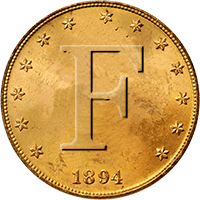mike, you say:
".....
aluminum and gold definitely sound diferent on the Excalibur. If fact, the middle part of the tone for aluminum has a buzz associated with it, whioe gold has a softer solid tone. I would think that there should be some differential between tone of aluminum and gold "
I am assuming you have come to these conclusions by evaluating the targets you dug (junk vs gold) and mentally correlating that to the signal you got, prior to digging it, right? Makes sense afterall, that we would all try to ask ourselves "what did that sound like vs what I just dug"
Then here's what I suspect is happening, if you think that gold and aluminum sound different: the psychological trick of "selective memory". It works like this:
Every time we md'rs stop to dig something, we subconsciously say to ourselves "this sounds different". Yet when it turns out to be junk, we say to ourselves "yeah, now that I think of it, it *did* sound kinda like junk", and forget our premonitions. But that one time it turns out to be a gold ring, we THEN recall our premonitions (analyzing repeatability, etc...) and say to ourselves "I knew it! I thought it might be a gold ring. Now if I can only memorize that signal!!"

It's the same pyschology that occurs when we think our dreams at night come through. You know, the song that plays on the radio when you wake up, just *happened* to be what you dreamt of during the night before. So you think "aha! I'm pyschic!" But the truth is, we all dig hundreds of dreams per night, none of which come true, so we promptly forget them. But when that one dream coincidentally comes true the next AM, only THEN do we remember the dream, and think "aha, I'm pyschic".
The same trick is at play is at play in the aluminum vs gold "tones" theory thing, I'm afraid.


 but I did find a 49 dime and a 46 penny on the beach today to go with the 30 or 40 PTs.
but I did find a 49 dime and a 46 penny on the beach today to go with the 30 or 40 PTs.